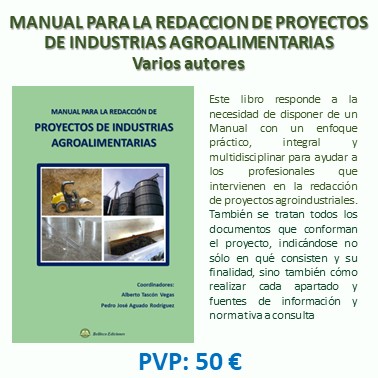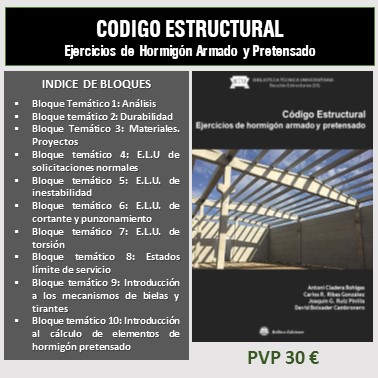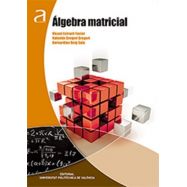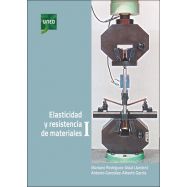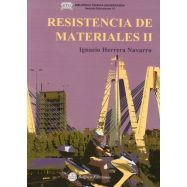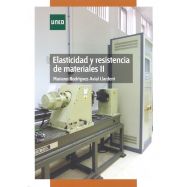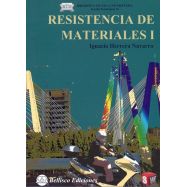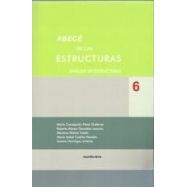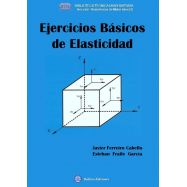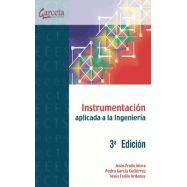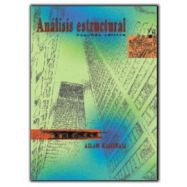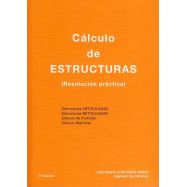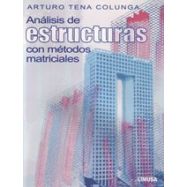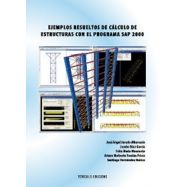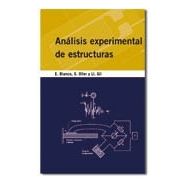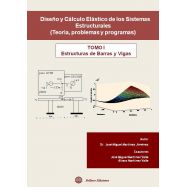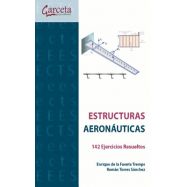Ningún producto
Materias
- BELLISCO EDICIONES. Nuestro Fondo Editorial
- FONDOS EDITORIALES EN DISTRIBUCION
- LIBROS TECNICOS EN INGLES
- ARQUITECTURA - URBANISMO
- AUTOMOCION - MOTORES - VEHICULOS
- AVIONICA - AERONAUTICA
- CALIDAD - EMPRESARIALES - GESTION
- CIENCIAS EXACTAS - MATEMATICAS
- CIENCIAS NATURALES Y APLICADAS
- CIENCIAS DE LA TIERRA - INGENIERIA DEL SUELO
- DICCIONARIOS TECNICOS
- ESTRUCTURAS - CONSTRUCCION
- Acústica (aislamiento, ruidos, vibraciones)
- Análisis de estructuras, resistencia de materiales, elasticidad, cálculo matricial
- Edificación
- Estructuras de Hormigón
- Estructuras Metálicas
- Estructuras de Madera
- Estructuras Mixtas
- Estructuras y Construcción en General
- Novedades Estructuras-Construccion
- rehabilitacion y restauracion
- Formación Profesional: Oficios en construccion, edificación y obras
-
- FORMACION PROFESIONAL
- HIDRAULICA - INGENIERIA SANITARIA - AGUAS
- INGENIERIA CIVIL - OBRAS PUBLICAS
- INGENIERIA MECANICA E INDUSTRIAL
- INSTALACIONES . GENERALES, EN EDIFICACION E INDUSTRIALES
- MATERIALES
- MEDIO AMBIENTE
- NORMATIVA
- OPOSICIONES
- PREVENCION DE RIESGOS LABORALES
- PROGRAMAS INFORMATICOS DE CALCULO
- TECNOLOGIA DE LOS ALIMENTOS: Industrias: Conservación, envasado y cadenas alimentarias
- TELECOMUNICACIONES - INFORMATICA - TECNOLOGIA DE LA INFORMACION
- OUTLET DE BELLISCO: Descuentos de hasta el 80%
- RELIGION, TEOLOGIA, MORAL Y ESPIRITUALIDAD
- VARIOS
- OFERTAS
- PROMOCIONES
- NEWSLETTER
- CATEGORIAS DESTACADAS
- ULTIMAS NOVEDADES BELLISCO
- ARQUITECTURA SOSTENBILE
- URBANISNO
- MATEMATICAS EN GENERAL
- AGRONOMOS-AGRICULTURA-FORESTALES
- ELECTROMAGENTISMO-ELECTRONICA-ELECTRICIDAD
- INGª Y MECÁNICA DEL SUELO. CIMENTACIONES
- TOPOGRAFIA, FOTOGRAMETRÍA, GEODESIA
- EDIFICACION
- ANALISIS DE ESTRUCTURAS, RESISTENCIA DE MATERIALES, ELASTICIDAD, CALCULO MATRICIAL
- OFICIOS VARIOS
- ABASTECIMIENTO Y DISTRIBUCION DE AGUA
- PUENTES
- TUNELES Y OBRAS SUBTERRANEAS
- MAQUINAS Y MECANISMOS
- SOLDADURA
- CLIMATIZACION
- INSTALACIONES DE AGUA
- INSTALACIONES ELECTRICAS CIENCIA E INGENIERIA DE MATERIALES
- ENERGIAS RENOVABLES
- DESARROLLO SOSTENIBLE
- INFORMATICA-SISTEMAS-FORMACION-PROGRAMAS
-
ANALYSIS OF STRUCTURES BY MATRIX METHODS
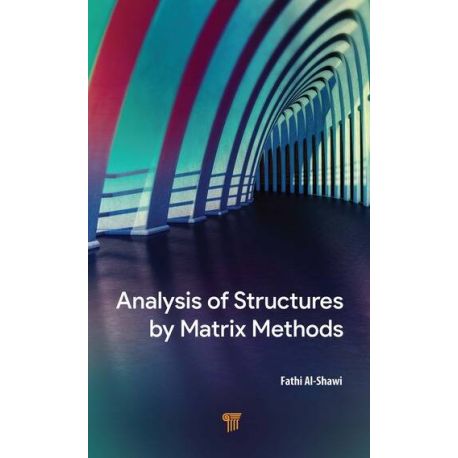 Ver más grande
Ver más grande Referencia: Código 10455
Marzo de 2023 - Fathi Al-Shawi - Refª 10455
Fathi Al-Shawi
Marzo de 2023 Páginas: 544 Tapa dura
Código 10455 ISBN/EAN: 9789814968195
Book Description
The analysis of engineering structures has always been a challenge to engineers, and in the past, classical methods were used to quantify the response of a structure to the applied forces. These methods were suitable for the analysis of relatively simple structures that could be solved by hand calculations but complicated structures had to be simplified to a model that could be solved by classical methods. The results, however, were approximations depending on the modifications made to the structure as well as on the experience and judgement of the analyst. These limitations led to the derivation of the slope-deflection equations for continuous beams, and later, formulation of the moment distribution method. With the advent of electronic computers, systematic procedures for the analysis of structures have been developed. Computer programs help in obtaining required solutions to the simultaneous equations in the case of structures where the number of equations is large and hand calculations are not suitable. The detailed work with simultaneous equations can be made in a general and compact form by using matrix notation, leading to the development of the matrix methods of structural analysis.
This book deals with the analysis of engineering structures made of skeletal members and covers the type of structures that are commonly used in practice. It builds up on the subject matter dealing with matrix algebra, analysis of bar elements, special forms of members, stability and vibration of structures, and pin-connected, rigid-plane, and 3D frames. It treats the important step of formulating the overall stiffness matrix of a structure in a systematic and straightforward manner and uses simple mathematical approaches wherever possible. The book is reader friendly, particularly for beginners who have no prior knowledge in this subject and can also be used as a textbook by undergraduate and postgraduate students studying for a degree in civil, structural, or mechanical engineering as well as by practicing engineers who have not studied this subject but are using software packages that deal with the analysis of engineering structures.
Table of Contents
1. Introduction to Matrix Algebra
2. General Principles
3. Pin Connected Plane Frames
4. Bending of Beams
5. Rigidly-Connected Plane Frames
6. Arches
7. Grillage Analysis
8. Beams Curved in Plan
9. Pin Connected Space Frames
10. Rigidly Connected Space Frames
11. Stability of Struts and Frames
12. Vibration of Beams and Frames
Author(s)
Biography
Fathi Al-Shawi is a senior lecturer in the Department of Engineering and Mathematics at Sheffield Hallam University, UK. He is a chartered structural engineer and a member of the Institution of Structural Engineers. Dr. Al-Shawi has over 40 years of experience in teaching, research, and consultancy in structural engineering.
Descripción del libro
El análisis de estructuras de ingeniería siempre ha sido un desafío para los ingenieros y, en el pasado, se usaban métodos clásicos para cuantificar la respuesta de una estructura a las fuerzas aplicadas. Estos métodos eran adecuados para el análisis de estructuras relativamente simples que podían resolverse mediante cálculos manuales, pero las estructuras complicadas debían simplificarse a un modelo que pudiera resolverse mediante métodos clásicos. Los resultados, sin embargo, fueron aproximaciones dependiendo de las modificaciones hechas a la estructura así como de la experiencia y juicio del analista. Estas limitaciones llevaron a la derivación de las ecuaciones de pendiente-deflexión para vigas continuas y, más tarde, a la formulación del método de distribución de momentos. Con el advenimiento de las computadoras electrónicas, se han desarrollado procedimientos sistemáticos para el análisis de estructuras. Los programas de computadora ayudan a obtener las soluciones requeridas para las ecuaciones simultáneas en el caso de estructuras donde el número de ecuaciones es grande y los cálculos manuales no son adecuados. El trabajo detallado con ecuaciones simultáneas se puede realizar de forma general y compacta utilizando la notación matricial, lo que lleva al desarrollo de los métodos matriciales de análisis estructural.
Este libro trata sobre el análisis de estructuras de ingeniería hechas de miembros esqueléticos y cubre el tipo de estructuras que se usan comúnmente en la práctica. Se basa en el tema relacionado con el álgebra matricial, el análisis de elementos de barra, formas especiales de miembros, estabilidad y vibración de estructuras y marcos 3D, de plano rígido y conectados por clavijas. Trata el paso importante de formular la matriz de rigidez general de una estructura de una manera sistemática y directa y utiliza enfoques matemáticos simples siempre que sea posible. El libro es fácil de leer, particularmente para principiantes que no tienen conocimiento previo en este tema y también puede ser utilizado como libro de texto por estudiantes de pregrado y posgrado que estudian para obtener un título en ingeniería civil, estructural,
Tabla de contenido
1. Introducción al álgebra matricial
2. Principios generales
3. Marcos planos conectados con pines
4. Flexión de Vigas
5. Marcos planos rígidamente conectados
6. Arcos
7. Análisis de Parrillado
8. Vigas Curvadas en Planta
9. Marcos espaciales conectados con pines
10. Estructuras espaciales rígidamente conectadas
11. Estabilidad de puntales y marcos
12. Vibración de vigas y pórticos
TAMBIEN LE PUEDE INTERESAR
- 33,25 €
- 34,20 €
- 16,00 €
- 73,15 €

